Saigon enchants its visitors by its modern skyline and colorful lights. Recently, in spite of being renewed with a myriad of magnificent buildings and trendy ways of life, the city has still retained a seeable and distinctive history. When it comes to the Reunification Palace or (Independence Palace), you totally can picture what you want to know. As one of the finest colonial structures in Saigon, the palace is considered not only the symbol of Vietnam national independence but also a special national monument for its architectural and historical values. Let Saigon Local Tour gives you brief information as well as the guidance of this must-see place in Ho Chi Minh which travelers should never give a miss when setting foot here.
Reunification Palace History
The Reunification Palace built on the site of the former French Palace of the Government, also known as Norodom Palace. In 1955, the South Vietnamese President Ngo Dinh Diem moved in and dubbed the structure. Diem would later order the demolition of this French-built structure after an attempted coup destroyed the left wing, and it was totally demolished in 1962. Construction of the new building finished four years later despite Diem’s assassination in 1963. From then until April 1975, the building housed South Vietnam’s leaders and acted as the workplace of the French Governor.
The palace marks its name as a historic place in April 1975 when the North Vietnamese Army whose tank rumbled on its main gate and put an end to the War. Thereafter, the palace was renamed the Reunification Palace in November 1975 and designated as a historical and cultural relic. Over fifty years on, it remains one of the few well-preserved structures in Southern Vietnam. Today, it’s still utilized to host important events in the city.
Independence Palace Architecture
Ngo Viet Thu was the architect of this modern-day rendition of the palace. He incorporated fortunate Chinese characters into the layout and design of the building. As a result, the shape of the palace has great reflections of different Chinese characters when viewed from different angles.
The Independence Palace consists of five levels. Perhaps the basement is the most fascinating of all. Fearful of the bombing attacks which had already targeted the building, Diem insisted on constructing as an underground tunnel system that was capable of withstanding bomb blasts. It was also arranged with meeting rooms and a command center. Towards the end are rooms where displaying videos appraise the palace and its history in Vietnamese, English, French, Chinese, and Japanese. Upstairs is a grand set of reception rooms which were used for welcoming foreign and national dignitaries. The third floor features the presidential library, card-playing room, an entertainment lounge, and a barrel-shaped bar while a cinema and casino placed on the fourth floor, complete with a helipad on the rooftop. At the back of this structure is the president’s living quarters.
What to see in the Reunification Palace
Besides the impressive and stunning interior of the Reunification Palace, the armament remnants outside are worth your visit as well.
Independence Palace Tanks
The 843 tanks were manufactured in Russia and it was the first tank attempting to ramp down the gates of the Reunification Palace in April 1975. It failed to bring down the gate, and it was the 390 tank which successfully crushed the gate and moved further to the main yard of the palace. This historical moment remarked the success of the long Ho Chi Minh revolutionary campaign and the official reunification and independence of Vietnam.
Both of the tanks are exhibited in the yard of the Palace are just the replicas of the real ones which are currently displayed in Hanoi.
The UH1 Helicopter
This remnant is displayed in the roof of the building. Produced by a US weapon brand, it was used for inspection tours of President Nguyen Van Thieu. This helicopter can take off and make land on many surfaces and used for combat, war mission, training, and emergency evacuations.
Complete Guide to the Reunification Palace
How to get to the Reunification Palace
Address: 135 Nam Ky Khoi Nghia, District 1
As the Independence Palace is close to many prominent attractions of Saigon such as Saigon Central Post Office and Notre Cathedral Dame, you can easily take a leisure walk from there to the palace. Taxi is also a good choice for you to get to the site at a cheap price. If you prefer public transport, buses number 04, 18, 31, 36, 42, 52 are available and then walk to approach the attraction.
Reunification Palace Entrance Fee
You can buy tickets at the main entrance, on the east side of the palace gardens.
Adults: VND 40,000/ person
University students: VND 20,000/ person
Primary school or high school students: VND 10,000/ person
Independence Palace Opening Hours
The palace opens for visitors from Monday to Sunday, including Vietnamese holidays.
Morning: 8.00 PM – 11.00 PM
Afternoon: 1.00 PM – 4.00 PM
Reunification Palace Dress Code
This is a historic and cultural relic of Vietnam, so you should dress properly by wearing clothing that covers up from your shoulders down to below your knees. It is always useful to take a scarf in your bag just in case.
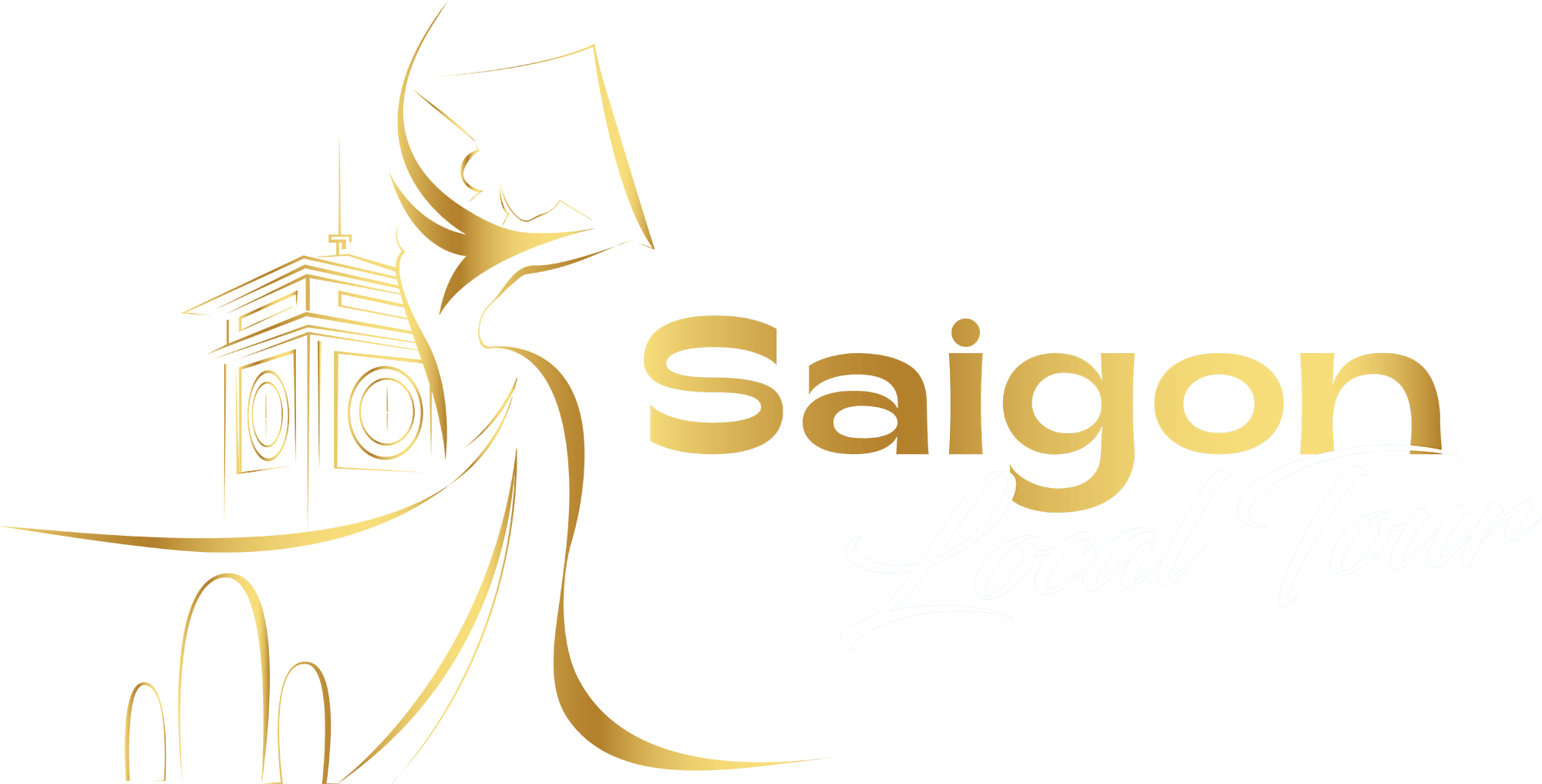
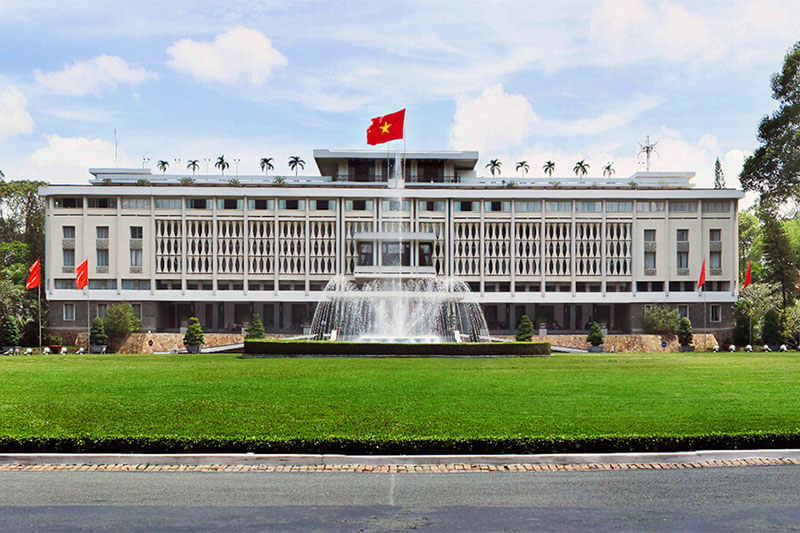
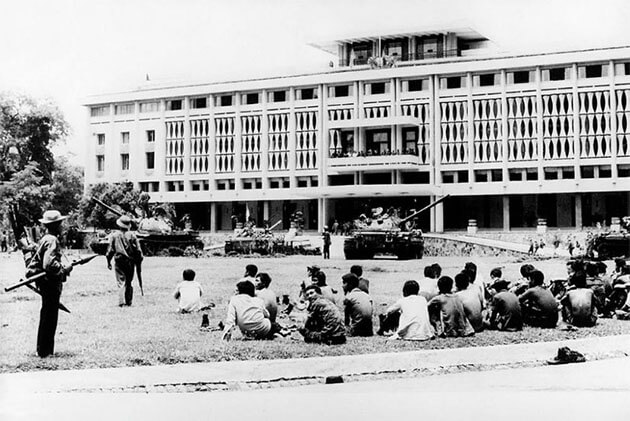
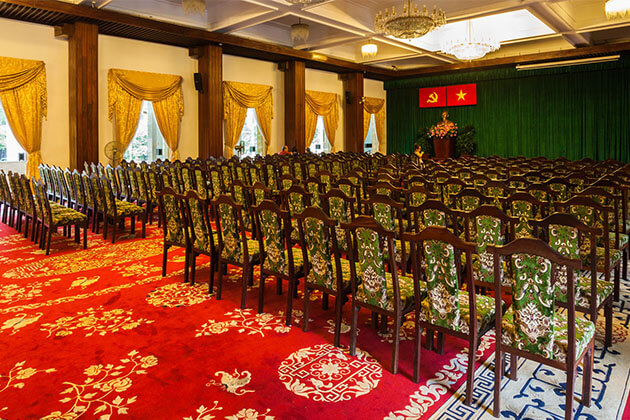
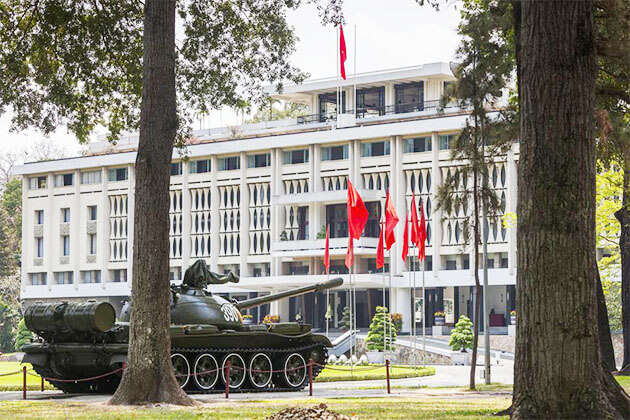
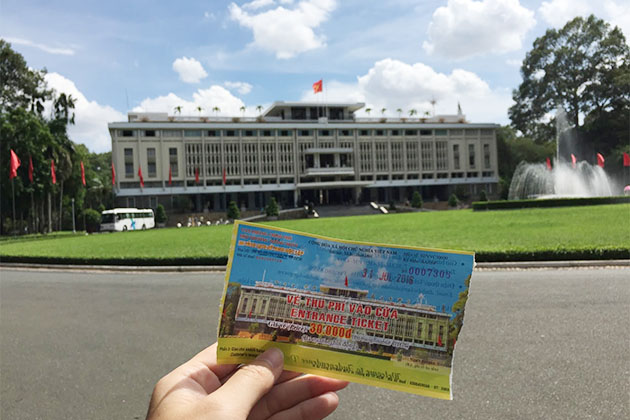
Reunification Palace is a symbol of the victory, peace and territorial integrity of Vietnam. Thanks to its historical significance, the Palace is one of the most appealing attractions attracting a large number of tourists to Ho Chi Minh City. The Palace is located in Nam Ky Khoi Nghia street, Ward Ben Thanh, District 1, Ho Chi Minh City.
Brief History of Saigon’s Reunification Palace
Reunification Palace, also known as Independence Palace, was built by the French in 1868 after conquering 6 Southern provinces and finished in 1871 with the former name of Norodom Palace. In 1962, it was designed and reconstructed by French-trained architect Ngo Viet Thu, (the first Vietnamese architect to have won the Prix de Rome) on the old foundation of Norodom Palace, symbolizes the traditional philosophy, Eastern rituals and the personality of Vietnamese people in a harmonious combination with modern architecture.
Since then, Independence Palace is the headquarters of the Saigon Government, which witnessed the intervention of foreign military causing devastating war in Vietnam.
This Palace was inaugurated on November 31st, 1966.
On April 30th, 1975, two tanks of the People’s Army of Vietnam crushed down the walls of the Reunification Palace, marking the fall of the Republic of Vietnam. The flag of the South Vietnam National Liberation Front floated above the roof of the Palace, ending the 30-year war of a heroic people.
Today, Independence Palace is a special national monument visited by a large number of domestic and foreign tourists. The Palace is still used to host the Vietnamese Government’s special occasions.
What to see in Independence Palace
Reunification Palace was built on the ground of 4,500 square meters with the total using area of 20,000 square meters. With the artistic eyes of the talented architect, Ngo Viet Thu conducted a great architectural work.
The front yard of the palace is an oval-shaped green lawn with a diameter of 102 meters, creating the cheery and comfortable feelings for visitors when they walk through the entrances.
The palace is a building of five storeys with the basement containing a tunnel, a war room, and a telecommunications center. Especially, inside Reunification Palace, there are many rooms decorated in different styles depending on the purpose of use, also known as “functional rooms”: Meeting room of The Cabinet Council, The Presidential Office, The Vice Presidential Office, The Library,… There is also a small movie theater, accommodating up to 50 spectators, specializing in the presentation of historical documentaries to serve tourists. Interestingly, there is also a rooftop terrace designed for heliport landing.
Some Travel Tips in Reunification Palace
Visit such a historical monument with a local guide will help tourists understand more about the Palace. The place provides foreign tourists with free guided tours in many different languages, consisting of English, French, Japanese, Korean and Chinese. It is extremely helpful for your tour around the palace.
Some tips to visit the Palace:
- Keep off the grass
- Tourists will be checked by security due to safety reasons
- You have permission to take photos around the palace
- Do not touch displays around the Palace
How to get to Independence Palace
Address: 135 Nam Ky Khoi Nghia, District 1, Ho Chi Minh City.
The Palace is well-known and located right in the city center, at the three-way intersection of Le Duan street and Nam Ky Khoi Nghia street, so getting it is very convenient. Many taxis, Grab drivers nearby are always waiting to serve you.
Opening hours
Reunification Palace opens daily from Monday to Sunday including holidays from 7:30 am to 11:00 am in the morning and from 1:00 pm to 4:00 pm in the afternoon.
Entrance fee
The entrance ticket is sold at the main gate. The price is quite reasonable, only 40,000 VND for adults, 20,000 VND for students and 10,000 VND for children from 6 to 12 years old.